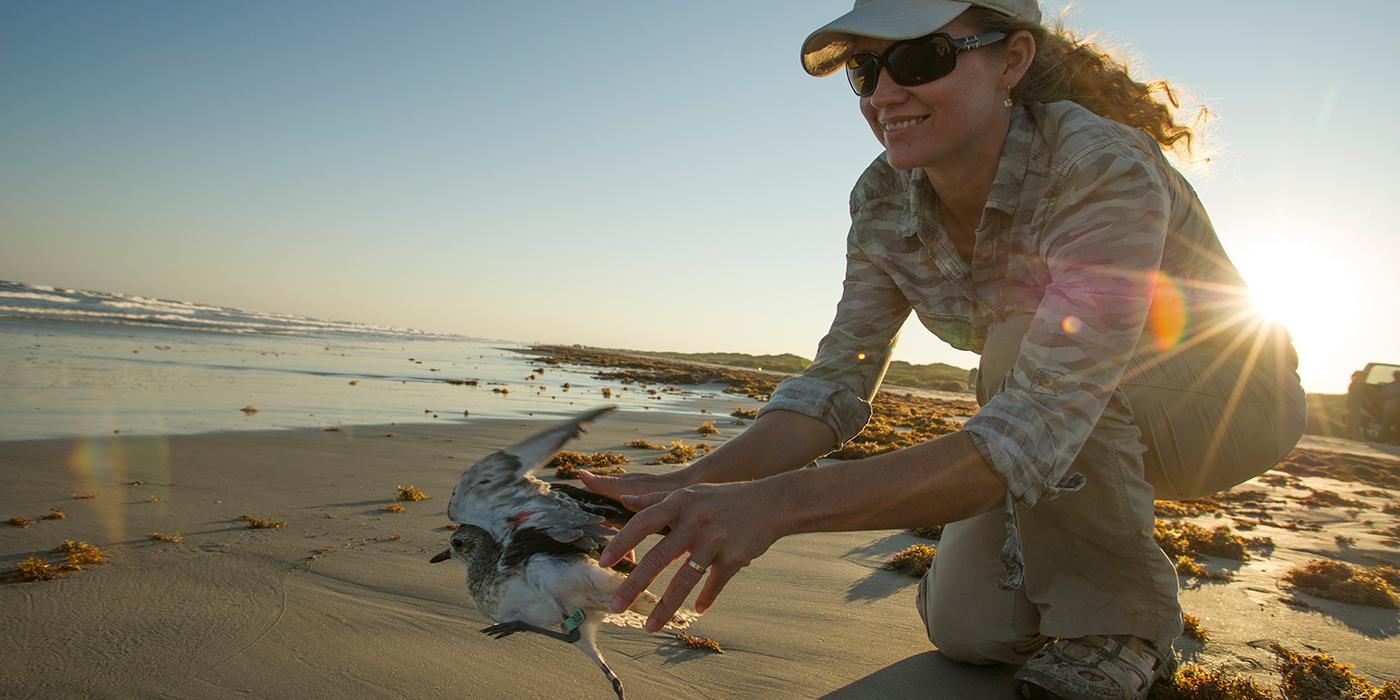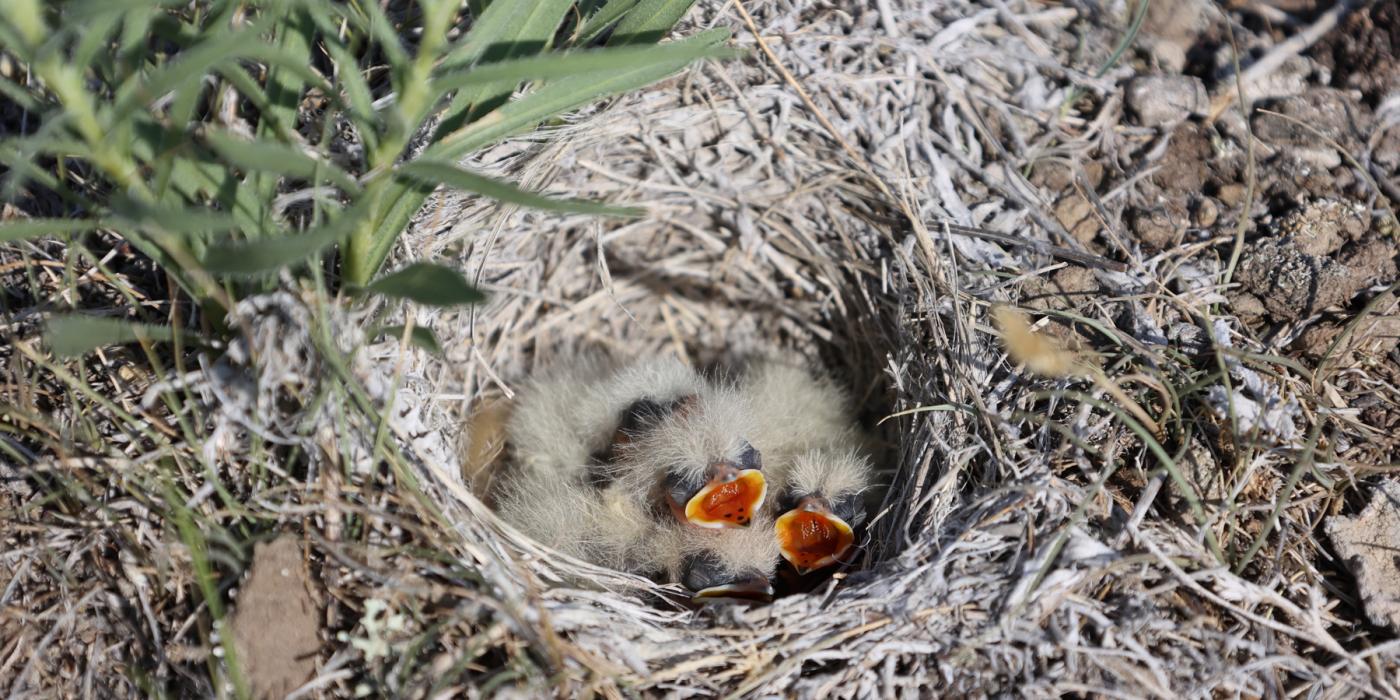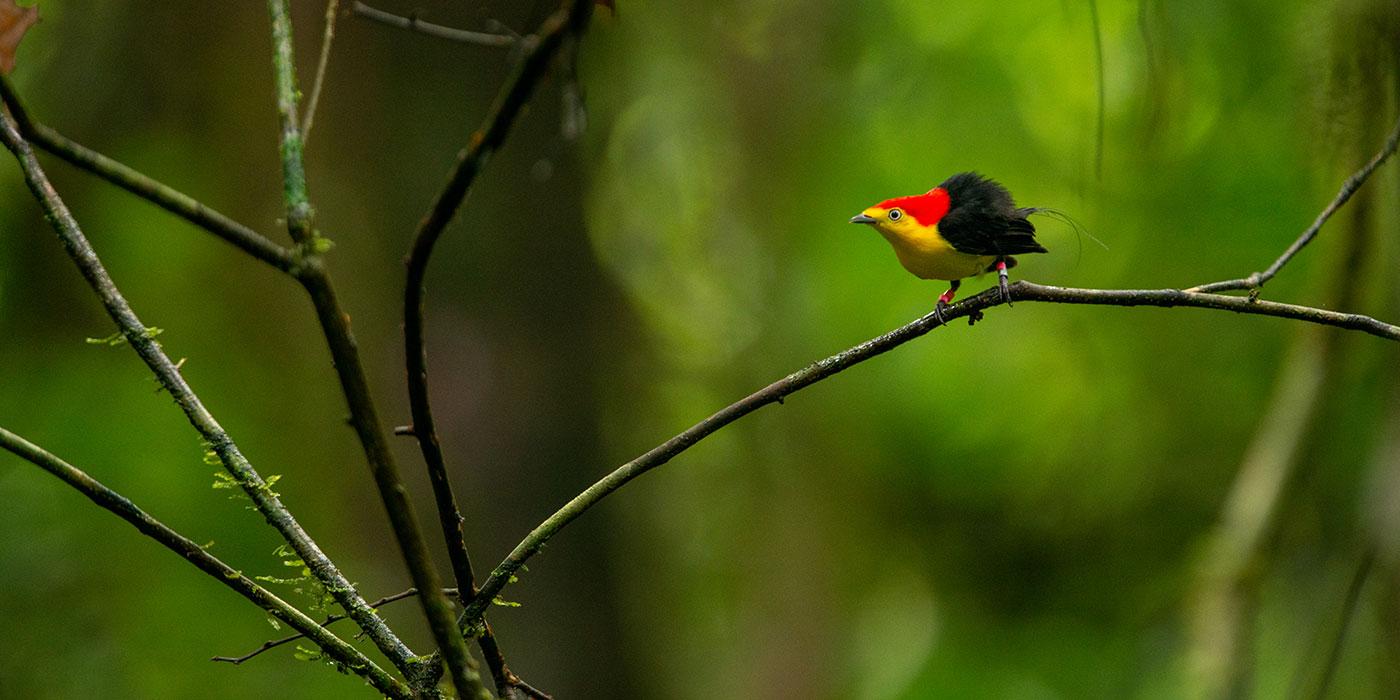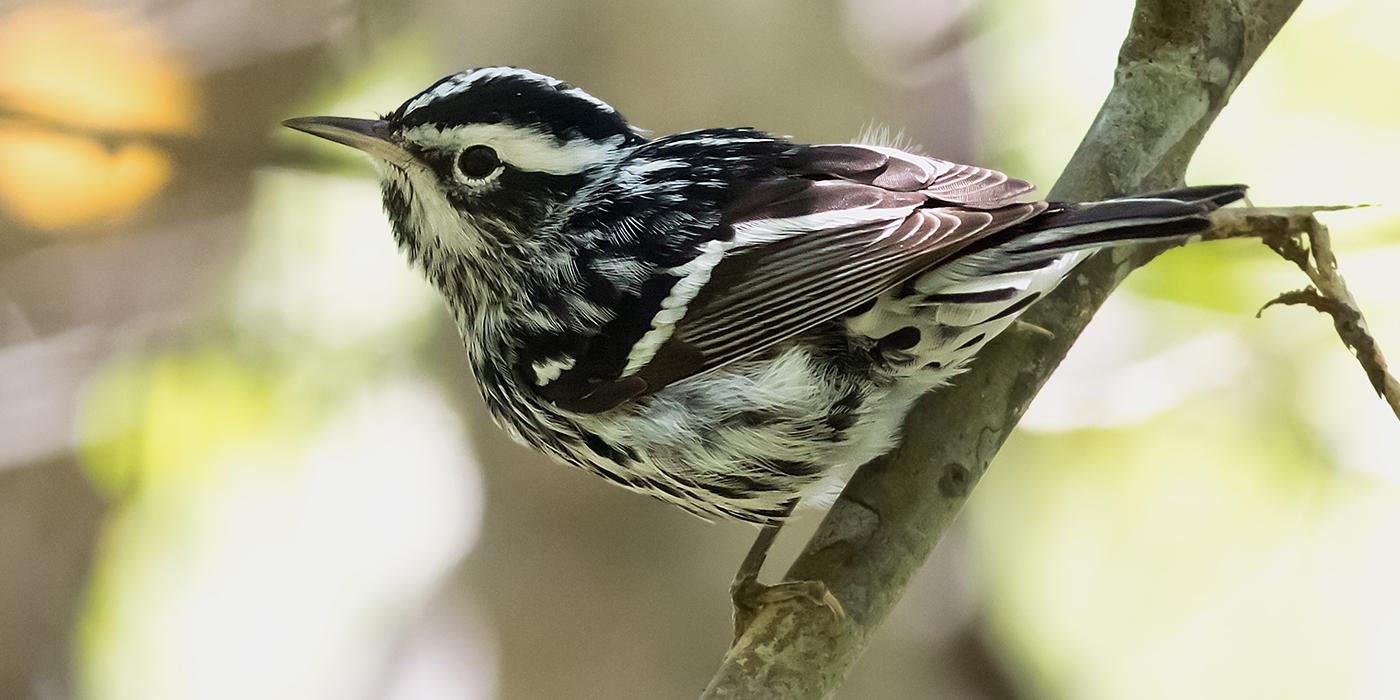How Birds Keep our World Safe from the Plagues of Insects

The Life of an Insect
Several species of insects including the Western Spruce Budworm, Gypsy Moth, Western Pine Beetle, and the Eastern Spruce Budworm experience population cycles in which populations remain low for several years and are followed by outbreaks (population explosions). During non-outbreak years, these insects are usually confined to small areas where trees are subject to adverse conditions, such as drought, and are too weak to defend against the insects.
Population outbreaks of some insect species can have a devastating effect on the forest because the insects severely defoliate the trees or attack the bark. Vast areas of forest have been killed during outbreaks in the past.
The basic life cycle of outbreak insects is a rapid growth of the larvae (caterpillars) during a short period, usually in June to mid-July, then a pupae stage (cocoons) in which the larvae change into adults (moths, butterflies, beetles), and finally the adult stage in which breeding and egg-laying take place. In some species the pupae stage will last through the winter, in others, the adults emerge in the same summer.
Dodging Death
Insects are subject to a myriad of threats including adverse weather, disease, parasites, habitat destruction, insecticides, and predation from spiders, ants, beetles, mammals, reptiles, amphibians, and birds. In the face of these threats, insects have evolved with complex methods for survival.
Predator-avoidance strategies are as varied as the insect themselves. Some create poisonous chemicals in their bodies, while others may have spines. Caterpillars and pupae often match their surroundings' color patterns, and some even mimic the shapes of leaves or twigs. Other species hide in dead, curled leaves, on the undersides of green leaves, in crevices in bark, under leaf litter on the ground, or in flowers. Some have even evolved feeding patterns to avoid predators, such as feeding at night, foraging in hidden spots, or by living and feeding under the bark. Other snip off the leaves that they fed on during the day in an attempt to trick birds that search for them on partially eaten leaves.
Birds are technologically advanced, highly motivated, extremely efficient, cost-effectiveinsect pest controllers.
Birds Kill Bugs Dead
For all of the tactics insects have developed to avoid predation, they still face many species of birds that are highly adapted, consummate insect-eaters:
- Birds are technologically advanced, highly motivated, extremely efficient, and cost-effective, insect-pest controllers.
- Outbreak insects are often infected with parasites. Many birds can identify the infected insects, and often choose to eat those that are not parasitized. By preying only on healthy individuals, birds greatly add to the effect of parasites in reducing insect populations.
- Birds can spread viral infections among the insect pests. By eating beetles and their viruses and by defecating these viruses along tree trunks, birds inadvertently spread it to bark beetles in the same tree and throughout the forest.
- The breeding season for birds occurs when the insect populations are their highest. During insect outbreaks, some birds will increase the number of offspring that they raise to take advantage of the abundant food supply.
- Birds are highly mobile and many species of birds will take advantage of a local insect outbreak by moving into the infected area. Some of these invasions can increase the normal numbers of birds in an area by 80 times.
- Birds like to feed large, juicy insects to their young. Relatively few insects survive past the egg and small, young larval stages. By feeding on large, late stages of caterpillars, and on pupae and adults, birds become a key force in depleting insect populations.
- Birds can alter their diets to feed almost exclusively on an insect pest during an outbreak, if it becomes profitable for them to do so. They can develop a search image for this new prey and can learn how to hunt for it more efficiently. Factors that help determine which insects birds select as prey are; insect density, body size and nutritional content, ease of capture, palatability (presence of chemical defenses or parasites), and density of potential competitors (other birds, mammals, ants, spiders, and predacious insects).
- Along with developing a search image, birds can change their foraging locations and foraging behavior in response to an insect outbreak. When a vast quantity of insects is found in the canopy of trees, many ground or shrub-dwelling birds may ascend into the canopy to feed. Similarly, during a hatch of flying insects, birds that generally feed by plucking caterpillars off leaves may instead fly after the insects and capture them in mid-air.
- Some foraging strategies of birds can alter an insect species' preferred habitat to such an extent that it kills many of those insects. For instance, by flaking bark off tree trunks, woodpeckers will expose bark beetles to temperature extremes, loss of moisture, parasites, and predators, all of which result in increased deaths.
- Birds can affect the evolution of insects by increasing the cost of avoidance strategies to insects. Many of the adaptations can decrease the insect's efficiency in feeding and/or ability to lay the greatest, potential number of eggs.
Battling the Bugs
Bird predation may play a critical role in reducing and/or maintaining low populations of insect prey during non-outbreak years and in significantly increasing the time between outbreaks. Studies have shown that birds can eat up to 98% of budworms and as much as 40% of non-outbreak species in eastern forests and can alter the population cycles and lower the population peaks when an outbreak does occur.
Increased numbers of birds in patches of forest with high insect pest density during a non-outbreak year may result in the elimination of those insects, and can alter the location and spread of a subsequent outbreak.
Orchards near woodlots tend to have a higher number of birds which result in a higher predation rate of agricultural insect-pests. In some orchards, birds eat up to 98% of the over-wintering Codling Moths, and can successfully control the pest population.
Helping Birds Help Us
There is much that we can do to promote the effectiveness of birds as predators of harmful insect, thereby helping ourselves financially and environmentally.
For example, we can encourage birds to take up residence in an area. Purple Martins have long been known as one of the most affective mosquito repellents. Protecting an existing colony, or helping the establishment of one is an important management tool.
In Europe, there have been numerous, successful, programs to provide nest boxes for cavity-nesting birds such as the Pied Flycatcher. These birds can substantially reduce the insect pest population without the economic, health and environmental costs of pesticides.
Managing for snags in a forest or woodlot can greatly increase the number of woodpeckers and other cavity-nesting birds. These species are highly efficient predators of insects, and can have a marked effect on insect populations.
One of the most promising forms of insect control is Integrated Pest Management (IPM), in which birds play a key role. The success and economic feasibility of these programs may depend on the number and diversity of birds in an area. Providing hedgerows, woodlots, streamside habitat, and shade trees in an agricultural landscape can provide cover and nesting areas for birds.
Insect outbreaks can annually destroy hundreds of millions of dollars of agricultural and forest products. In 1921, Edward Forbush wrote that
“forest and agricultural pests were reduced by 28% by birds resulting in savings of $444,000,000 in crop and timber losses.”
The value of birds in current dollars is beyond our imagination. Their value is not just in their actual consumption of insect pests, but also in their role in keeping future outbreaks to a minimum.
Further Reading:
- Dickson, J.G. et. al., eds. The Role of Insectivorous Birds in Forest cosystems. Academic Press. New York. 1979. 381 pp.
- Holling, C.S. Temperate Forest Insect Outbreaks, Tropical Deforestation and Migratory Birds. Mem. Entomol. Soc. Canada. 146:21-32. 1988
- Morrison, M.L. et. al., eds. Avian Foraging: Theory, Methodology, and Applications. Studies in Avian Biology No. 13. Cooper Ornithological Society. Allen Press, Inc. Lawrence, KS. 1990. 514 pp.
- Pschorn-Walker, H. Biological Control of Insects. Ann. Rev. Entomol. 22:1-22. 1977.
- Takekawa, J.Y. et. al. Biological Control of Forest Insect Outbreaks: The Use of Avian Predators. in 47th N.A. Wildlife Conference. pp. 393-408.


